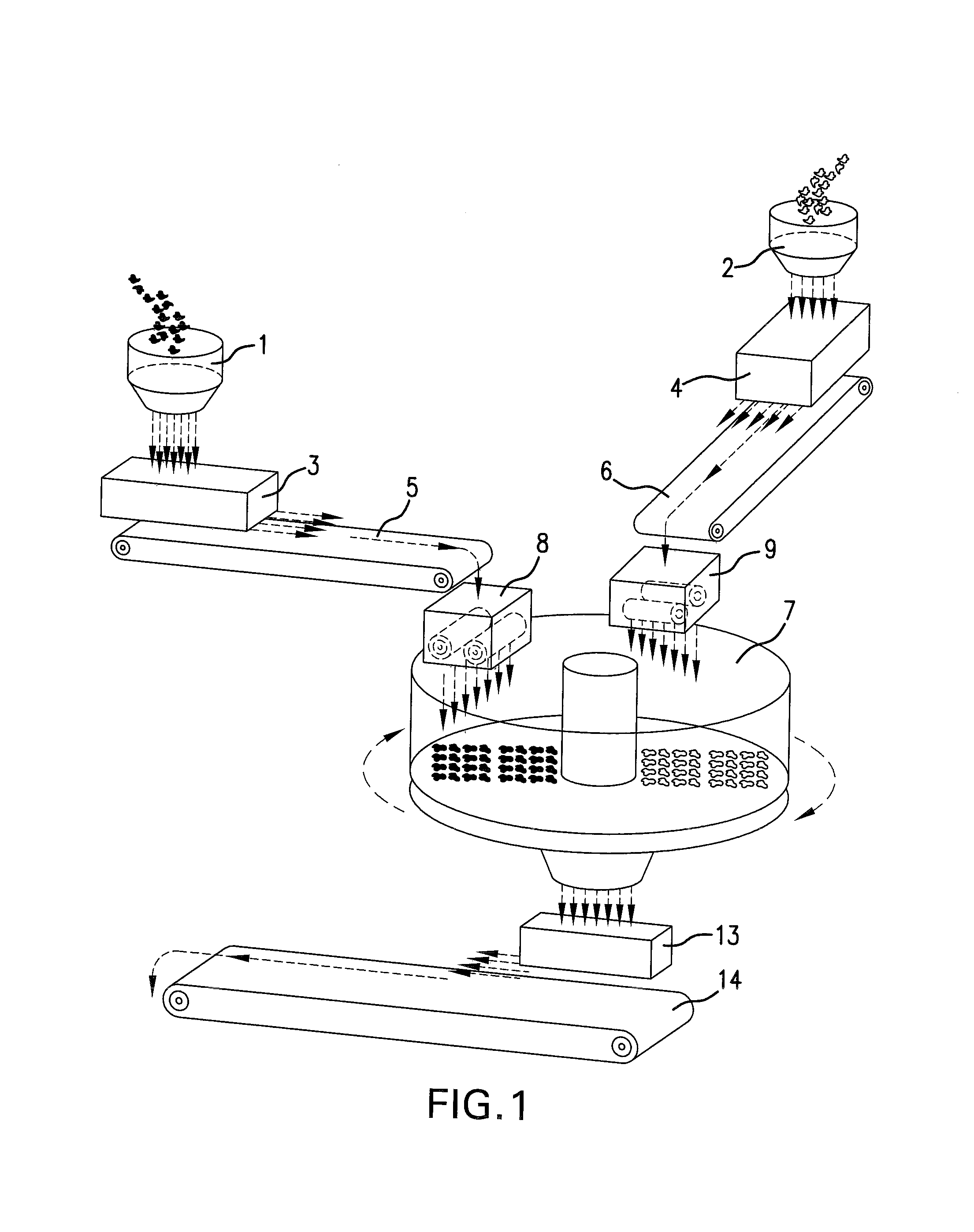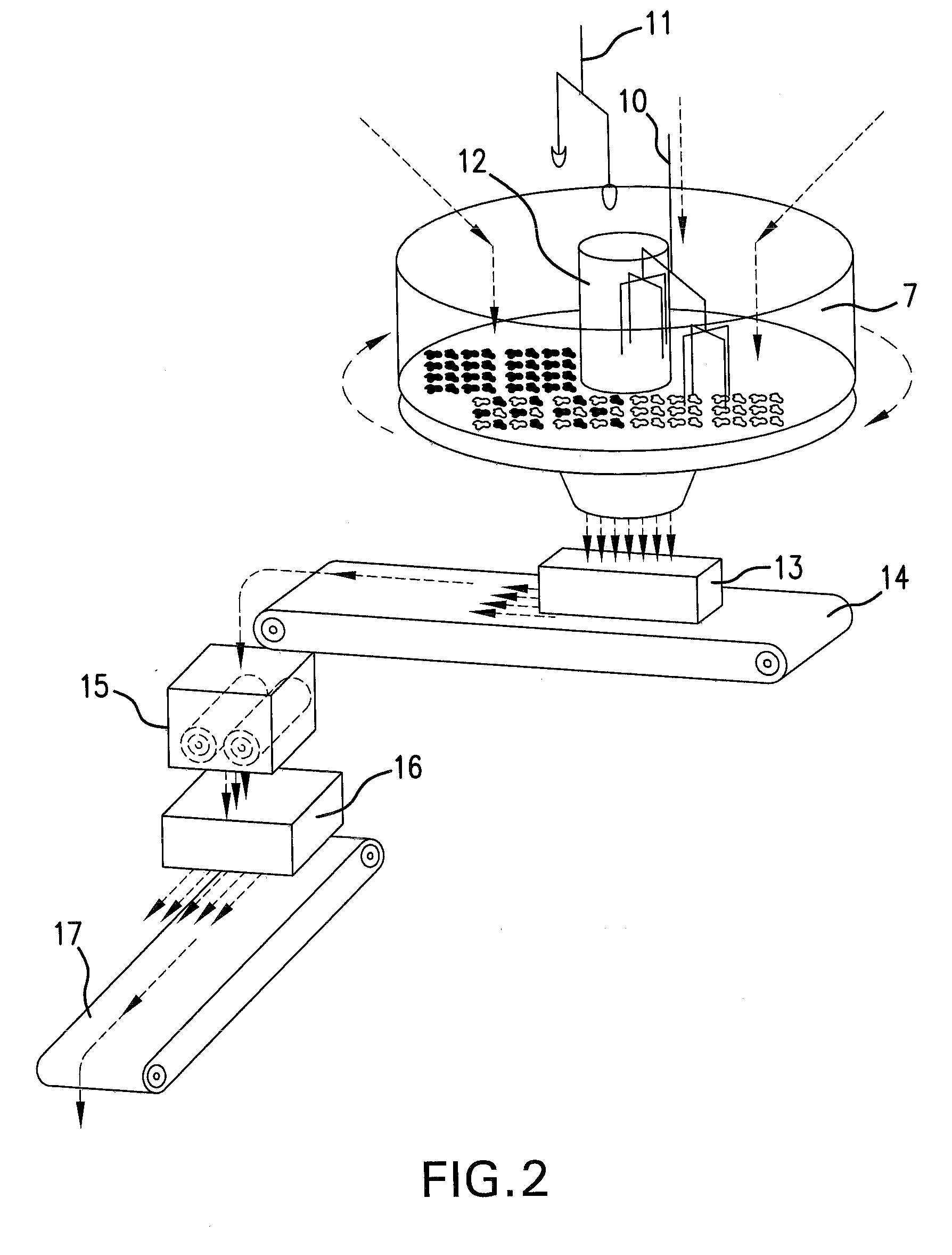Slab of composite material
a composite material and slab technology, applied in the field of composite material slabs, can solve the problems of not homogeneous stratification of mixtures, poor distribution of mixtures, and inability to achieve uniform stratification of mixtures
- Summary
- Abstract
- Description
- Claims
- Application Information
AI Technical Summary
Benefits of technology
Problems solved by technology
Method used
Image
Examples
Embodiment Construction
[0046]According to the Figures the material contained in mixers (1) and (2) in the form of a mix is unloaded to the levelling hoppers (3) and (4) and extracted from 30 the latter by means of extracting belts (5) and (6).
[0047]The mixture is conveyed by such belts to the disc (7) after passing through calibrators (8) and (9). The disc rotates about its axis and is provided with a particular equipment having the function of a mixer (10) and two unloading vanes (11) that lower at the end of mixing and by their rotation convey the material to the central opening of the disc which is meanwhile opened by raising the central cylinder (12). The mixture-falls into the levelling hopper ‘(13) and 10 is extracted by belt (14), passes through calibration rollers (15) and arrives to hopper (16) and then to belt (17).
[0048]The mixtures extracted from the levelling hoppers (3) and (4) at a constant speed are fed on a proportional basis to the homogenizing disc rotating about itself. Therefore, the ...
PUM
| Property | Measurement | Unit |
|---|---|---|
| thickness | aaaaa | aaaaa |
| movement | aaaaa | aaaaa |
| length | aaaaa | aaaaa |
Abstract
Description
Claims
Application Information
 Login to View More
Login to View More - R&D
- Intellectual Property
- Life Sciences
- Materials
- Tech Scout
- Unparalleled Data Quality
- Higher Quality Content
- 60% Fewer Hallucinations
Browse by: Latest US Patents, China's latest patents, Technical Efficacy Thesaurus, Application Domain, Technology Topic, Popular Technical Reports.
© 2025 PatSnap. All rights reserved.Legal|Privacy policy|Modern Slavery Act Transparency Statement|Sitemap|About US| Contact US: help@patsnap.com



